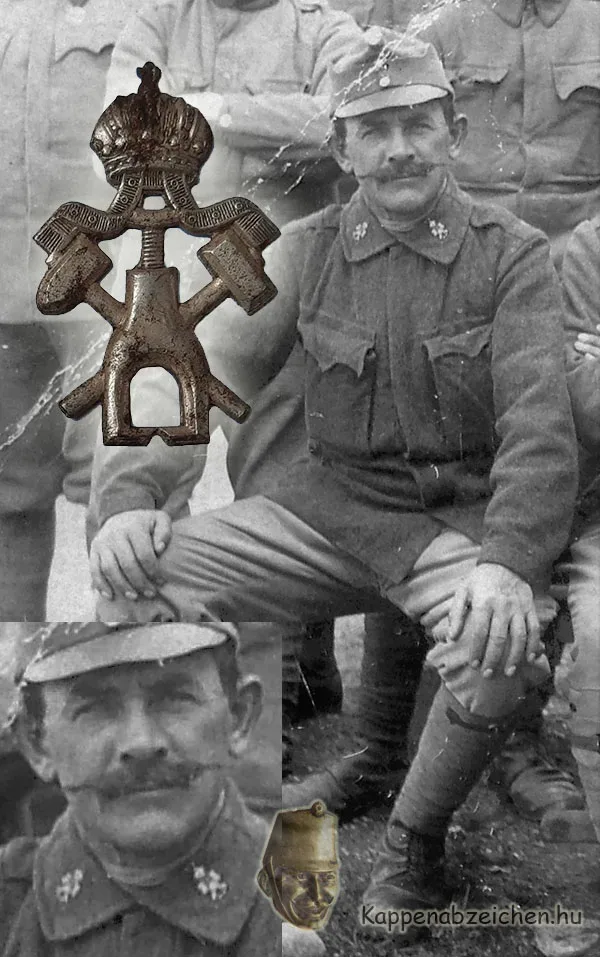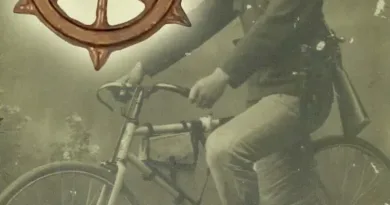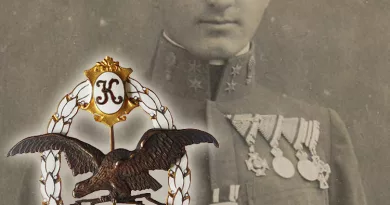Rock drilling unit insignia
We have today Gábor Széplaki’s latest post on special troops’ insignia.
In 1915, with Italy’s entry into the war on the side of the Entente powers, completely new front lines opened, which stretched across the hard rock-covered mountain terrain. As a result, special warfare, different from the usual one, was needed, which adapted to these specific geographical and geological conditions. The center of gravity of the battles was the struggle for heights and mountain peaks. The opposing sides tried to deploy as many artillery pieces as possible, and here the Italian side showed multiple superiority. Against the continuous artillery fire, the Monarchy’s troops fighting here did not have much natural cover, so these had to be created artificially. Special technical soldiers appeared in response to this challenge: rock drillers.
In contrast to the soldiers of the previously presented construction squadrons, these technical troops did not consist of older age insurgents or unarmed people unfit for frontline service. According to contemporary descriptions, the soldiers of the 1st Honvéd Insurgent Stone Workers’ Squadron were men of conscription age with professional qualifications, who were armed with short-barreled cavalry carbines. Their main activity was the creation of positions, caverns, shelters by blasting and using special tools. Based on these, we can assume that miners, railway track construction workers, road builders, were purposefully selected for these units. That is, conscripts with the necessary pre-training to perform the task were selected. In 1916, a special insignia was issued for the rock drilling troops.
On the badge, made of sheet metal, the tools of mining and metalworking appear under the imperial crown. Officers, Landsturm engineers, and the Viennese rock drill instructor and replacement battalion’s commander wore a gilded badge on the collar and on the left side of the cap. The crews of the formations wore a silver insignia. The title image is a rare wear photo showing the crew version. A potential version of the insignia with the Hungarian holy crown is not known. Hence we can conclude that the troops were only present in the joint and Landwehr/Landsturm formations.
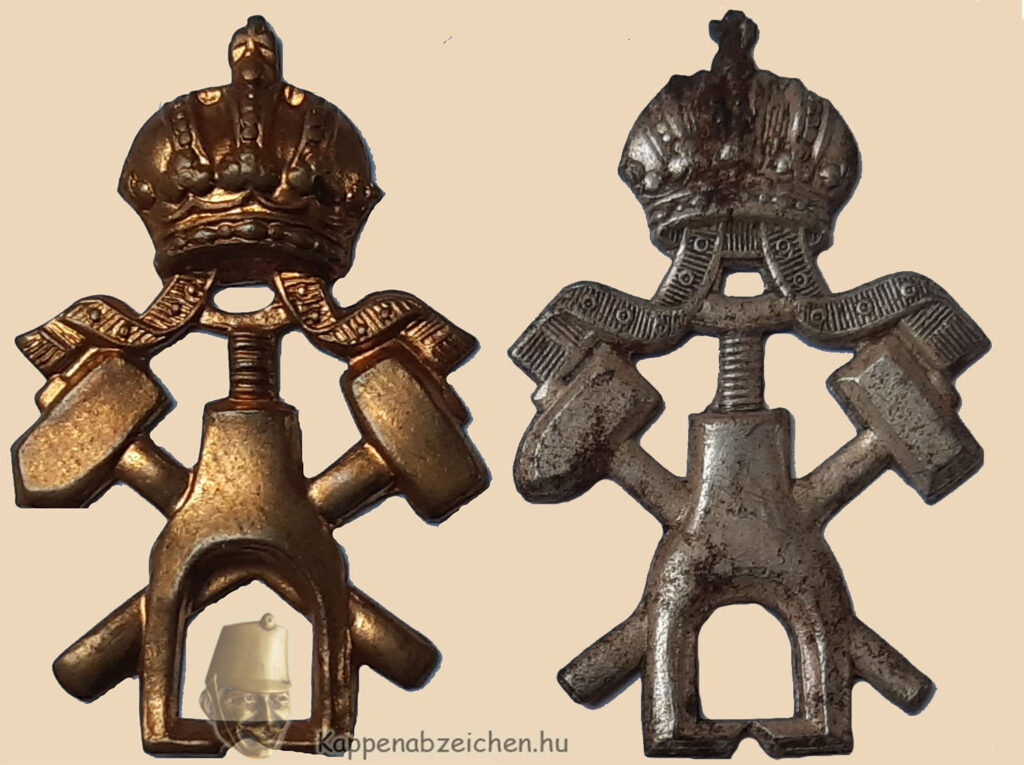
The picture above shows an also rare officer version of the badge, which differs from the previous crew version in the smallest details of its design. Unlike previous badges, I have yet to see a piece embroidered with metal thread. Both badges and wearing photos are extremely rare.
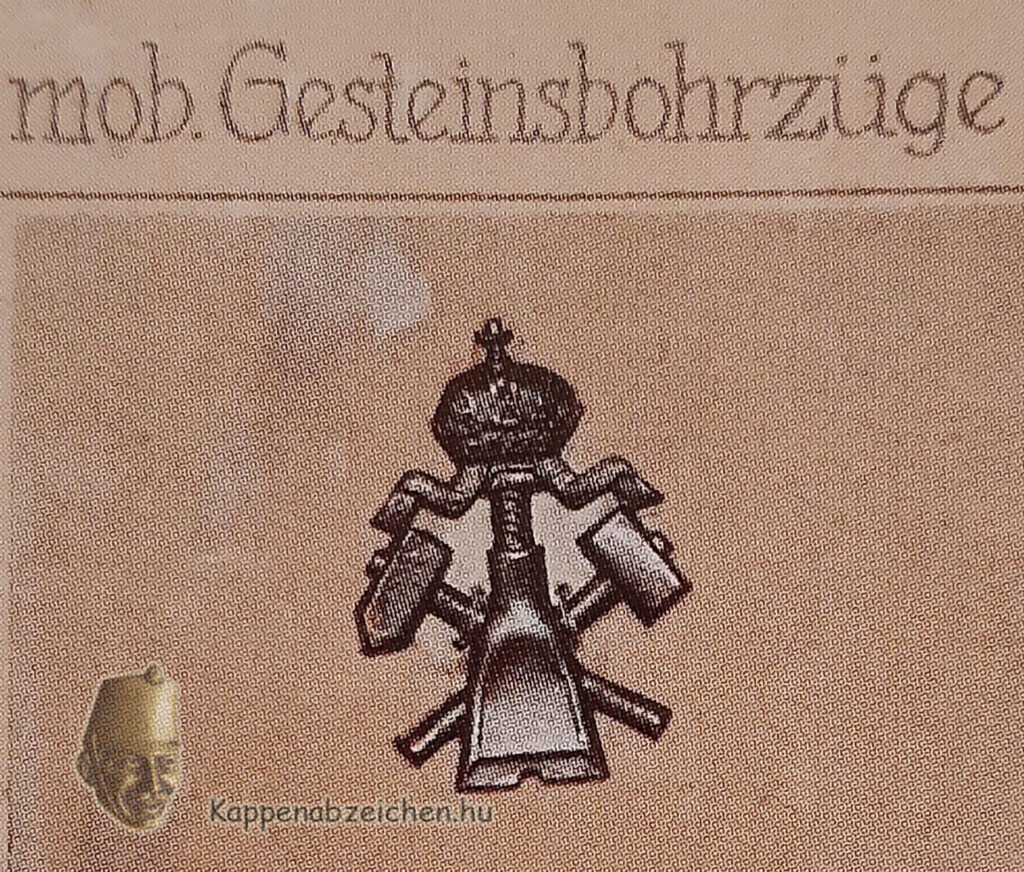
The following picture comes from the 1917 presentation table that I used several times in my previous posts. Here we can see a third type of design. The name of the unit is also interesting, which refers to the unit as a mobile rock/rock drilling squad.
It is strange that the badges are not mirrored left and right like some others, but the same “positions” were used. We can see an example of this in the following photo, where the soldier of the unit also wears the third type of insignia on his collar.
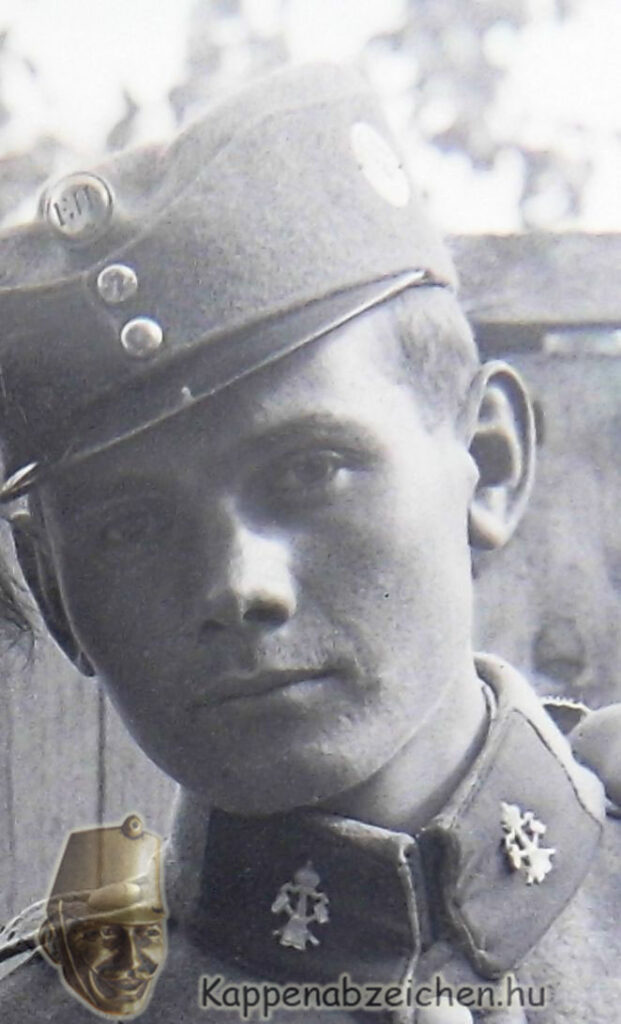
Another interesting thing is visible in this great wearing photo. The badge on the soldier’s cap may be the solution to an older puzzle. I have had the pieces below in my collection for a long time, but so far I have not found any written or worn evidence of them. Many similarities can be observed in the motifs, and the fixation with sewing is clearly visible in the photo. If anyone has useful information about these badges, please share them with me.
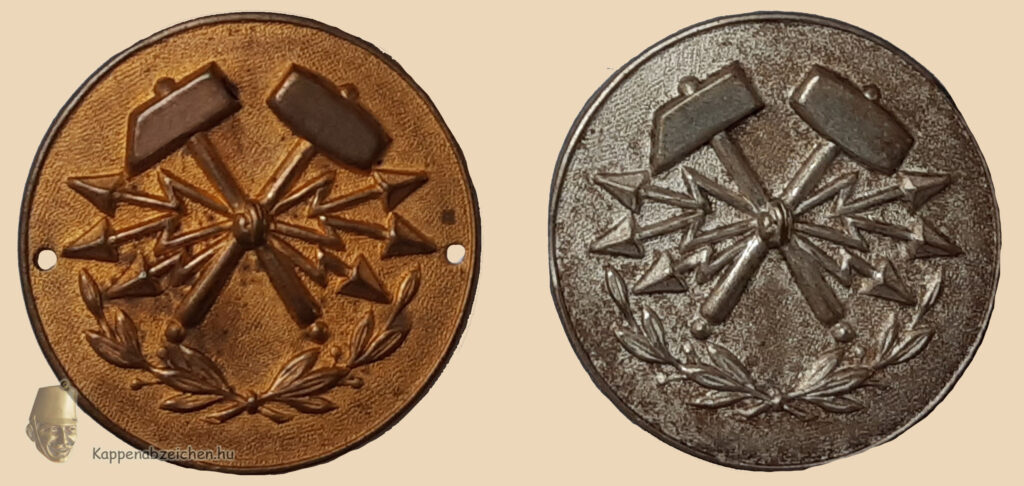
I would like to express my gratitude to my friend Ferenc Bálint for providing me with a copy of the glass negative owned by the Vörösmarty Mihály Könyvtár in Bácsalmás for the purpose of this post.

